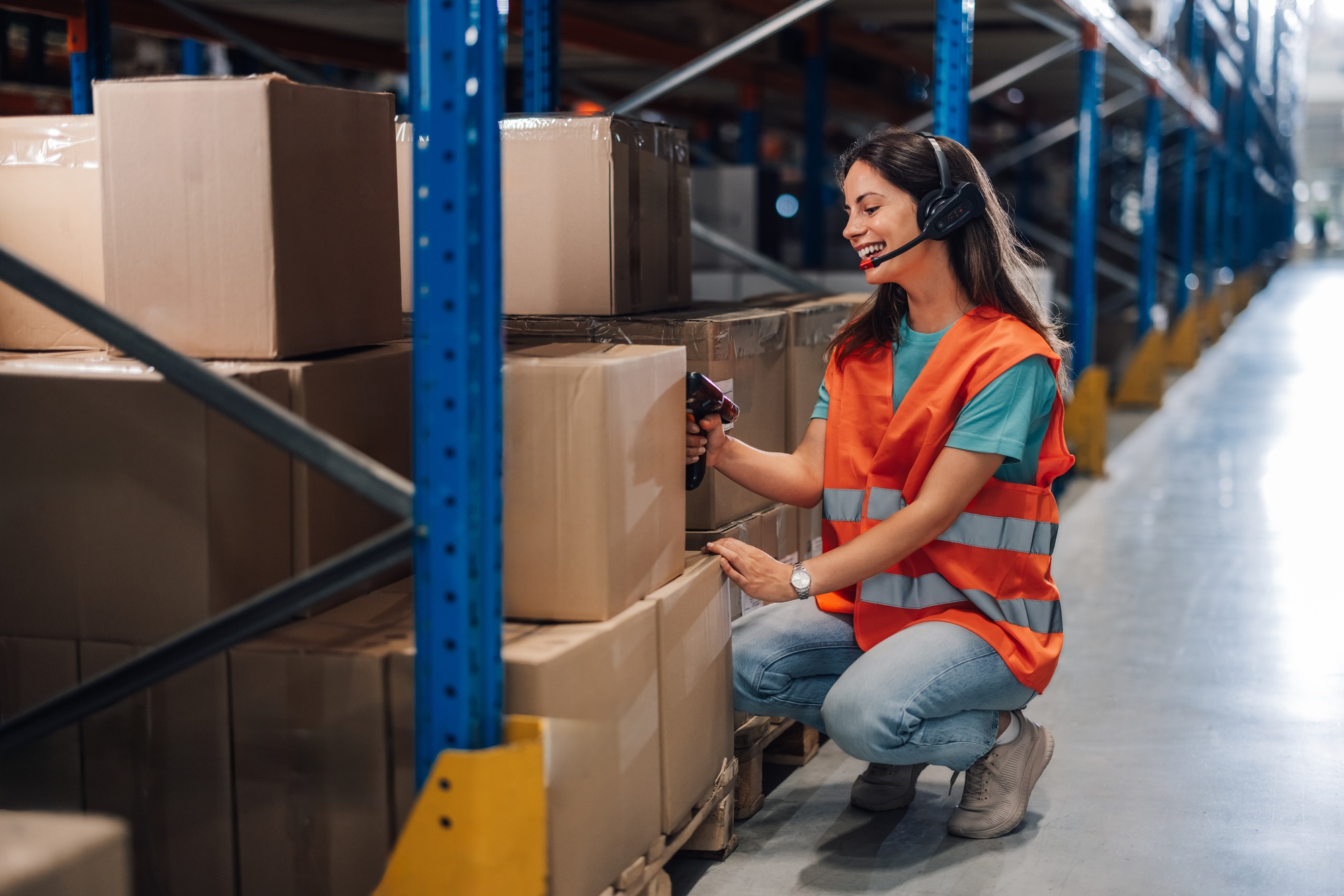Globale Logistik-Tracking-Plattform Experteneinblicke
Der globale Handel ist auf Bewegung angewiesen, und Bewegung braucht Transparenz. Ein Unternehmen, das Waren länderübergreifend versendet, muss wissen, wo sich jede einzelne Sendung befindet, wie schnell sie unterwegs ist und wann sie ankommt. Deshalb ist die Plattform für globale Logistikverfolgung hat sich zu einem echten Wendepunkt entwickelt. Es bietet nicht nur Standortaktualisierungen, sondern auch Echtzeit-Einsichten die den Unternehmen Macht über ihre Lieferketten geben. Auf PostpaketWarum diese Plattformen so wichtig sind, wie sie funktionieren und was die Zukunft bringt, erfahren Sie hier.

Definition und Bedeutung
A Plattform für globale Logistikverfolgung ist ein digitales System, das es Unternehmen und Kunden ermöglicht, die Bewegung von Waren in internationalen Lieferketten in Echtzeit zu verfolgen. Im Gegensatz zu einfachen Sendungsverfolgungsnummern von Kurierdiensten integrieren diese Plattformen mehrere Spediteure, Transportarten und Datenpunkte in einer Schnittstelle.
Die Bedeutung ist einfach, aber enorm:
- Transparenz - Kunden über den Status ihrer Bestellung informieren.
- Effizienz - Die Unternehmen verringern Verzögerungen, indem sie schnell reagieren.
- Vertrauen - Partner und Kunden gewinnen Vertrauen, wenn die Lieferketten sichtbar sind.
Diese Ebene der globale logistische Sichtbarkeit ist in einer Zeit, in der der elektronische Geschäftsverkehr und der internationale Handel die Wettbewerbsfähigkeit bestimmen, unerlässlich geworden.
Schmerzpunkte der Industrie
Herkömmliche Sendungsverfolgungssysteme waren nie für globale Komplexität ausgelegt. Unternehmen, die sich nur auf Aktualisierungen durch Kuriere verlassen, stehen vor ernsten Problemen:
- Fragmentierte Daten - Jedes Unternehmen hat sein eigenes System, was zu blinden Flecken führt.
- Begrenzter Anwendungsbereich - Eine auf das Inland konzentrierte Verfolgung kann grenzüberschreitende Bewegungen nicht erfassen.
- Langsame Aktualisierungen - Statusänderungen erfolgen oft erst nach dem Ereignis und nicht in Echtzeit.
- Mangelnde Vorhersagekraft - Unternehmen können Störungen nicht vorhersehen, sondern nur reagieren.
Diese Probleme machen deutlich, warum die Plattform für globale Logistikverfolgung ist nicht nur ein Luxus, sondern eine Notwendigkeit für moderne Lieferketten.
Technologie-Unterstützung
Die Stärke dieser Plattformen liegt in der fortschrittlichen Technologie.
- Künstliche Intelligenz (KI) - analysiert Muster in Sendungen, sagt Verspätungen voraus und schlägt bessere Routen vor.
- Internet der Dinge (IoT) - Geräte wie GPS-Sensoren und RFID-Etiketten senden Live-Daten von Lastwagen, Schiffen und Lagerhäusern.
- Big Data-Analytik - verarbeitet riesige Mengen an Informationen und erstellt übersichtliche Dashboards.
- Blockchain - sichert Transaktionen und erstellt vertrauenswürdige Aufzeichnungen über Warenbewegungen.

Gemeinsam schaffen diese Technologien globale logistische Sichtbarkeit Das war noch vor einem Jahrzehnt unmöglich.
Anwendungsszenarien
Der Einsatz einer globalen Logistikverfolgungsplattform ist branchenübergreifend:
- Elektronischer Geschäftsverkehr - Online-Shops sind auf eine schnelle und sichtbare Lieferung angewiesen, um die Kunden zufrieden zu stellen. Die Kunden erwarten aktuelle Informationen und keine vagen Schätzungen.
- Herstellung - Fabriken, die nach dem Just-in-Time-Prinzip arbeiten, müssen die aus mehreren Ländern eintreffenden Teile verfolgen. Jede Verzögerung kann Produktionslinien zum Stillstand bringen.
- Grenzüberschreitender Handel - Importeure und Exporteure müssen mehrere Spediteure, Zollkontrollen und Übergaben bewältigen. Eine einzige Plattform vereinigt all diese Schritte.
Diese breite Palette von Anwendungen zeigt, dass die Sendungsverfolgung keine optionale Dienstleistung mehr ist - sie ist das Rückgrat des modernen Handels.
Führende Plattform Fallanalyse
Mehrere Unternehmen haben im Bereich der globalen Nachverfolgung Maßstäbe gesetzt, und jedes bringt einzigartige Stärken auf den Markt:
- Flexport - kombiniert Speditionsleistungen mit Echtzeit-Dashboards und bietet Unternehmen die volle Kontrolle über die Lieferkette sowie umfassende Analysen zur Optimierung von Kosten und Routen.
- Projekt44 - konzentriert sich auf prädiktive Erkenntnisse und Live-Daten von Tausenden von Anbietern weltweit und ist damit führend im Echtzeit-Ausnahme-Management.
- FourKites - bietet eine multimodale Verfolgung von See-, Luft-, Schienen- und Straßensendungen mit leistungsstarken Transparenz-Tools, die für große, komplexe Logistiknetzwerke entwickelt wurden.
- Shippeo - Shippeo, das für seine starke europäische Abdeckung bekannt ist, bietet auch fortschrittliche Vorhersagewarnungen, die Unternehmen helfen, Störungen vorherzusehen und sich schnell anzupassen.
Diese führenden Unternehmen zeigen, dass es im Wettbewerb nicht nur darum geht, mehr Funktionen hinzuzufügen, sondern auch darum, die zuverlässigsten, genauesten und skalierbarsten Produkte zu liefern. Plattform für globale Logistikverfolgung Erfahrung. Unternehmen, die solche Lösungen einsetzen, können Transparenz in einen strategischen Vorteil umwandeln und sowohl die Kundenzufriedenheit als auch die betriebliche Belastbarkeit verbessern.out-Funktionen, sondern auch darum, wer die zuverlässigsten und genauesten Plattform für globale Logistikverfolgung Erfahrung.
Wie Unternehmen die richtige Plattform wählen können
Für Unternehmen, die eine Einführung erwägen, ist der Auswahlprozess ebenso wichtig wie die Technologie. Zu den wichtigsten Faktoren gehören:
- Integration - Kann die Plattform eine Verbindung zu Ihren bestehenden ERP oder E-Commerce-System?
- Erfassungsbereich - Unterstützt es alle Regionen und Netzbetreiber, mit denen Sie arbeiten?
- Benutzererfahrung - Ist die Schnittstelle für Mitarbeiter und Kunden einfach genug zu bedienen?
- Skalierbarkeit - Kann die Plattform mit den Anforderungen Ihres Unternehmens wachsen?
- Kosten vs. Wert - Bringt die Investition Einsparungen durch Effizienz und weniger Unterbrechungen?

Unternehmen sollten auch den Kundensupport testen, denn die Logistik schläft nie, und Ausfallzeiten sind kostspielig.
Vorhersage zukünftiger Trends
Die Zukunft der logistischen Verfolgung ist mehr als nur eine Standortbestimmung auf einer Karte. Sie bewegt sich in Richtung eines vollständig intelligenten und vernetzten Ökosystems. Das können wir erwarten:
- KI-gestützte Prognosen - Plattformen zeigen nicht nur Verspätungen an, sondern analysieren auch Verkehrs-, Wetter- und Zolldaten, um Präventivmaßnahmen vorzuschlagen, bevor Probleme auftreten.
- End-to-End-Sichtbarkeit - die Verbindung von Rohstoffen, Produktion, Lagerhaltung und Lieferung auf der letzten Meile zu einer einheitlichen Kette, die blinde Flecken reduziert und die Koordination zwischen den Partnern verbessert.
- Verfolgung der Nachhaltigkeit - Emissionen, Energieverbrauch und Umweltauswirkungen werden in Echtzeit überwacht, so dass die Unternehmen die Vorschriften einhalten und ihren Kunden gegenüber ihre grüne Verantwortung demonstrieren können.
- Stärkere Automatisierung - Weniger manuelle Aktualisierungen und mehr Maschine-zu-Maschine-Kommunikation werden die Logistik rationalisieren, vom Hafenbetrieb bis zum Scannen im Lager.
In den kommenden Jahren werden diese Trends die globale Lieferkette intelligenter, schneller und umweltfreundlicher machen und den Unternehmen helfen, wettbewerbsfähig zu bleiben und gleichzeitig die steigenden Kundenerwartungen zu erfüllen.
Schlussfolgerung
A Plattform für globale Logistikverfolgung ist mehr als ein Werkzeug; es ist eine Transformation für internationales Geschäft. Es geht auf die Probleme der Branche ein, nutzt moderne Technologien und sorgt für einen schnellen und transparenten Warenfluss. Für Unternehmen, die im grenzüberschreitenden Handel wettbewerbsfähig bleiben wollen, ist die Einführung eines solchen Systems keine Option mehr.
Auf PostpaketWir sind der Meinung, dass die Zukunft der Logistik den Unternehmen gehört, die sich für die globale logistische Sichtbarkeit. Mit Echtzeit-Einblicken, vorausschauender Intelligenz und weltweiter Abdeckung wird die Lieferkette nicht nur überschaubar, sondern zu einem starken Wachstumsmotor.

Häufig gestellte Fragen
Wie kann ich die globale Logistik verfolgen?
Sie können die globale Logistik über ein Plattform für globale Logistikverfolgung die Träger integriert, Echtzeit-Updates liefert und eine vollständige Sichtbarkeit der Lieferkette.
Wie kann man Sendungen aus China verfolgen?
Verwenden Sie eine Logistikplattform oder die Website eines Spediteurs, die grenzüberschreitende Sendungsverfolgung unterstützt. Geben Sie Ihre Sendungsverfolgungsnummer ein, um aktuelle Informationen zu Zoll, Transit und Lieferung zu erhalten.
Was ist eine Software zur Logistikverfolgung?
Es handelt sich um ein digitales Tool, das Sendungsdaten sammelt und anzeigt und Unternehmen und Kunden bei der Überwachung von Waren über verschiedene Transportunternehmen, Verkehrsträger und Regionen hinweg unterstützt.
Was ist globales E-Tracking?
Unter Global E-Tracking versteht man die Online-Verfolgung von internationalen Sendungen über ein zentrales System, das den Nutzern überall auf der Welt Echtzeit-Updates liefert.
Einblicke in die Industrie
Nachrichten über den Posteingang
Nulla turp dis cursus. Integer liberos euismod pretium faucibua








